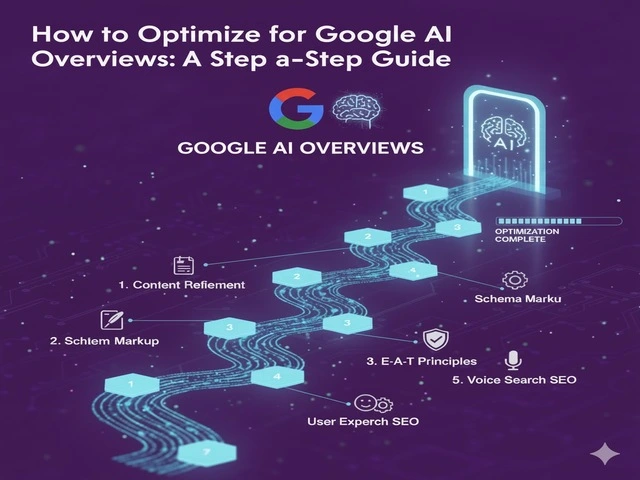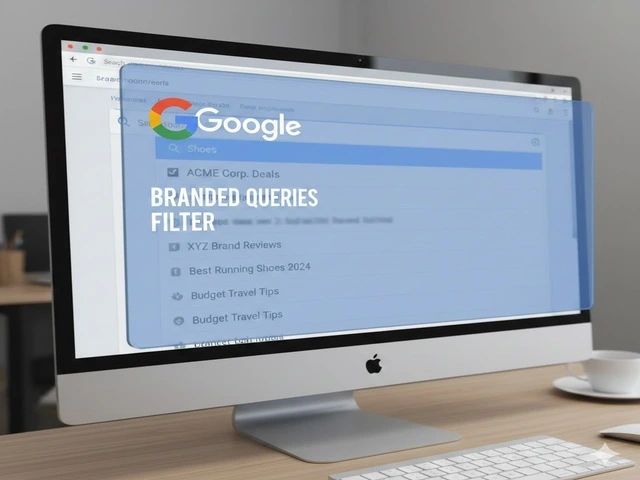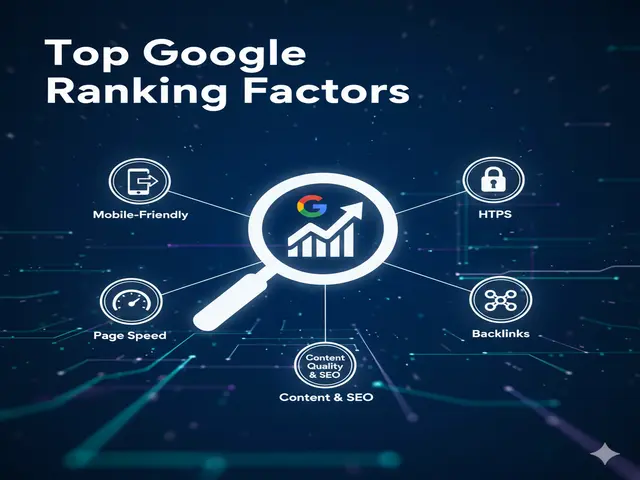Search is getting smarter, and so should your SEO strategy. As Google rolls out AI Overviews, it’s time to learn how to make your content visible to both people and machines. Here’s a simple guide to help you get started.
Search is changing fast. If you have noticed Google showing quick summaries at the top of results instead of the usual list of blue links, that’s part of a major shift. These summaries are called AI Overviews, and they give users ready-made answers within seconds.
In many niches today, queries like “how to create a podcast,” “best protein powders,” “SEO roadmap for beginners,” or “what is schema markup” already trigger AI Overviews. These summaries frequently blend information from multiple authoritative websites.
For businesses, this means traditional SEO alone is no longer enough. Your content now needs to speak to both people and Google’s AI systems. That’s where Answer Engine Optimization (AEO) comes in. In this guide, we’ll explore what AI Overviews are, why they matter, and how you can optimize step by step to stay visible.
What Are Google AI Overviews?
AI Overviews are Google’s way of showing an instant, conversational answer at the top of a search page. Instead of scrolling through links, users can see a summarized response created by generative AI.
These overviews pull data from several trusted pages that demonstrate topical authority, clear structure, strong EEAT signals, and answer-focused formatting.
For instance, when someone searches:
- “best digital marketing company in Mumbai”
- “how to improve SEO for small businesses”
- “is on-page SEO still important?”
Google may show a short paragraph summarizing key points, followed by website links used as sources. These websites are chosen based on authority, clarity, content structure, schema, and relevance.
The goal is convenience. Google wants to help users complete their search faster. For brands, the opportunity lies in becoming one of the sources the AI trusts enough to quote or summarize. That requires a shift in how we create and structure content.
Why AI Overviews Matter for Businesses and SEO Agencies
AI Overviews are more than a new look for search results. They are an early sign of how users will interact with search in the future.
When your website is cited in an AI Overview, even without receiving a click, your brand earns visibility, trust, and authority. It reinforces your brand’s presence at the very moment users are forming opinions and making decisions. It signals that Google’s AI system recognizes your content as accurate and helpful.
For local businesses, this is especially powerful. For example, if someone searches:
- “best seo services in Mumbai”
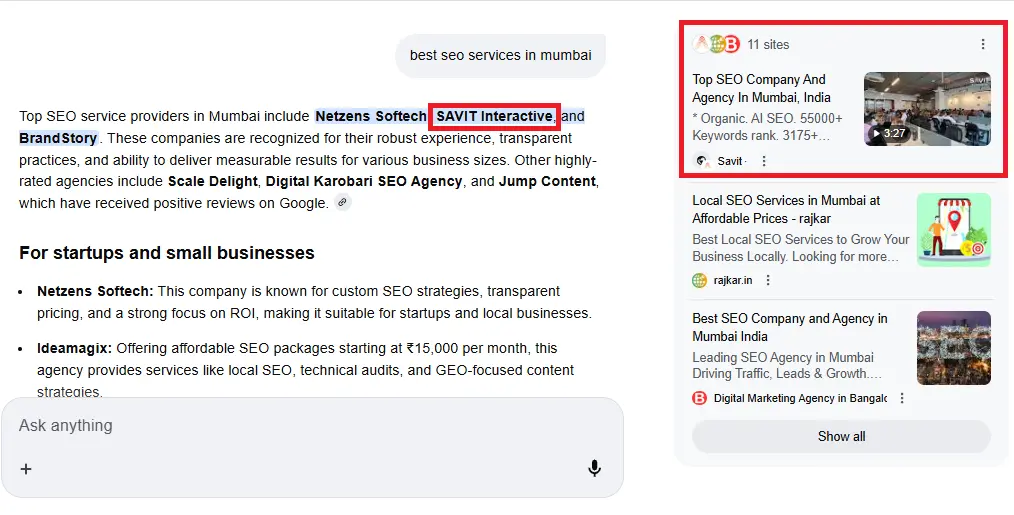
- “seo services in mumbai”
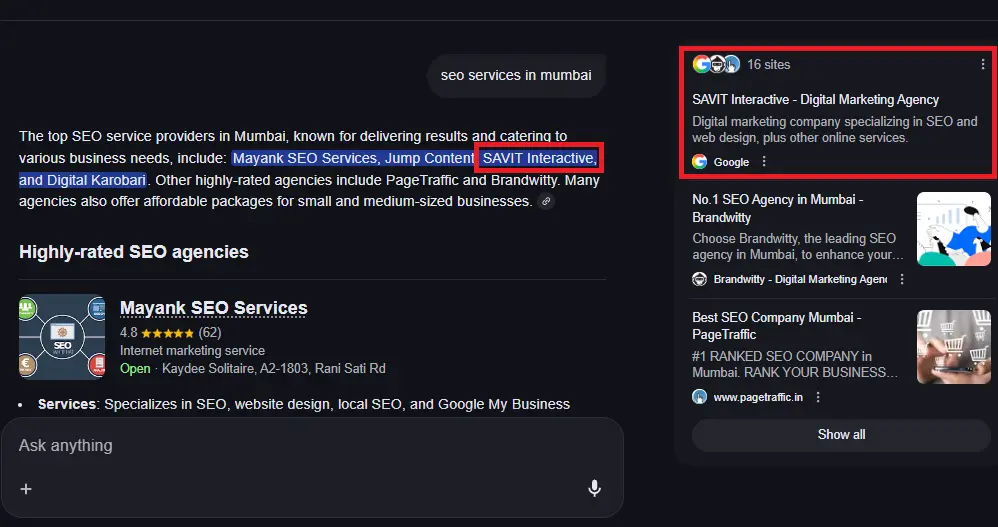
- “seo company”
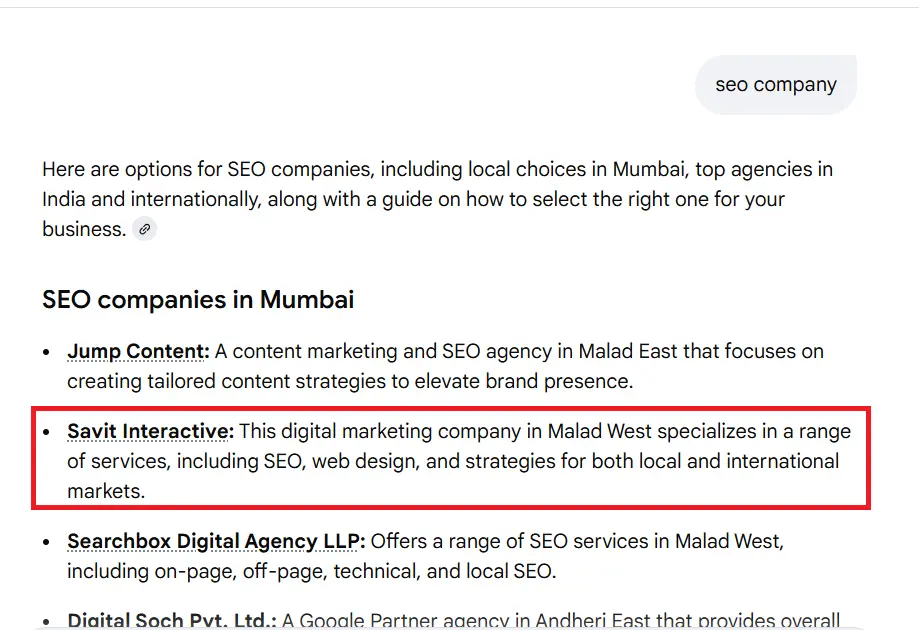
The AI Overview may highlight agencies, examples, or service recommendations drawn from local signals such as business profiles, reviews, and regional relevance.
SEO Agencies that adapt to this shift are moving from keyword optimization to answer optimization. That’s the mindset required to appear in AI Overviews.
Step-by-Step Optimization for Google AI Overviews
Now let’s break down how to actually prepare your content and website so that Google’s AI notices you.
Step 1: Understand Search Intent in the AI Era
The first step is to understand why someone searches, not just what they type.
In the AI era, users phrase queries conversationally, such as:
- “How do I improve my website SEO quickly?”
- “Which SEO tools are best for beginners?”
- “What is the difference between AEO and SEO?”
To map these behaviors, explore:
- People Also Ask
- Reddit threads
- Quora discussions
- Google’s autocomplete
- SERP analysis for similar queries
Then group these topics into clusters:
Informational Intent
“How does schema markup work?”
“What is AI SEO?”
Transactional Intent
“Best SEO agency in India”
“Affordable PPC services in Mumbai”
Local Intent
“SEO companies near me”
“SEO experts in Andheri East”
AI Overviews reward pages that mirror conversational language, answer direct questions, and offer step-level clarity.
Step 2: Structure Content for Answers
AI Overviews love clarity. That means your content should be easy to scan, well-organized, and quick to answer key questions.
Start by turning major questions into subheadings. For example:
- What is Answer Engine Optimization?
- How is AI SEO Optimization different from traditional SEO?
- Why does Local SEO still matter?
Then, under each heading, give a direct answer in one or two short paragraphs. Keep it factual and under about sixty words for the opening line. This concise explanation often becomes the text snippet that AI systems highlight.
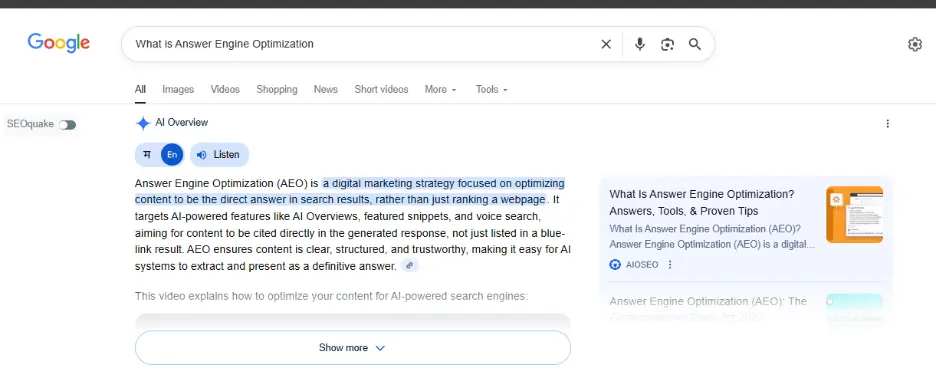
Use:
- Bulleted lists
- Short definitions
- Mini tables
- Examples of live queries that trigger AI Overviews
This is how you create “answer-ready” sections Google can pull from.
Step 3: Use Structured Data and Schema Markup
Behind every strong AI Overview result lies clean, consistent structured data.
Schema markup helps search engines understand:
- What your page is about
- How your content is structured
- How different sections relate to user intent
- Whether your content is instructional, local, or informational
If you are publishing guides, FAQs, or tutorials, consider adding these schema types:
- FAQPage
- HowTo
- Organization
- LocalBusiness
You can test your code using Google’s Rich Results Test. Even if you do not write code yourself, most website builders and SEO plugins support schema tags automatically.
Internal links are equally important. Connect your blog posts with related service pages and FAQs. This web of context helps AI identify your site as a reliable knowledge source. Strengthen internal links by connecting:
- Blog → service pages
- Blog → case studies
- Blog → FAQs
- Clusters → pillar pages
These create semantic relationships that help AI group your content as authoritative.
Step 4: Strengthen Your Topical Authority
Google’s AI does not just look at a single page. It studies how much overall expertise your website demonstrates. That’s why topical authority matters.
Create content clusters around major themes like “AI SEO Optimization,” “Local SEO Services,” or “Answer Engine Optimization.” Each cluster should have:
- A detailed pillar article explaining the concept
- Supporting blogs that cover specific questions
- Case studies or examples showing your experience
Backlinks from niche-relevant websites amplify this signal further. Focus on quality, not quantity. A handful of links from credible marketing blogs can do more for authority than dozens of generic directories.
Finally, showcase real-world expertise. Add author bios that mention professional roles or achievements. When users and algorithms see experience and trust, they are more likely to treat your site as a dependable source.
Step 5: The Role of Local SEO in AI-Driven Discovery
AI Overviews are not just for global searches. They also play a major role in how people discover nearby services.
For queries like:
- “best SEO agency near me”
- “digital marketing company in Mumbai”
- “web design services in Thane”
Google uses a combination of:
- Local SEO signals
- Google Business Profile relevance
- Reviews
- Location-based schema
- Consistent NAP citations
To optimize:
- Keep your Google Business Profile updated
- Add FAQs, posts, service descriptions
- Encourage customers to use keywords in reviews
- Use LocalBusiness schema with coordinates
- Add images, Q&A, service attributes
When done correctly, local SEO acts as the bridge between your offline business presence and online AI visibility. It ensures your brand appears not only in maps but also in AI-generated overviews that users trust.
Step 6: Measure if Your AI SEO Optimization Is Working
Traditional SEO metrics like clicks and rankings still matter, but in the AI Overview era, you’ll need to track additional signals.
Start with Google Search Console. Look for increases in impressions, even if click-through rates don’t move much. Higher impressions indicate that your pages are appearing in AI results or featured sections.
Watch for new queries in your Search Console report that sound conversational or question-based. These often reflect AI-powered searches.
You can also use tools like SurferSEO, NeuronWriter, or MarketMuse to check how semantically rich your content is. These tools help identify whether your writing aligns with the kind of natural, answer-focused structure that AI Overviews prefer.
Finally, measure engagement on your site. If users spend more time reading or interact with your FAQ sections, it’s a strong sign that your content is matching their search intent.
Step 7: Common Challenges in AI SEO Optimization
Optimizing for AI Overviews is not a one-time setup. It requires patience and ongoing learning.
One challenge is the dynamic nature of Google’s AI models. The websites it pulls information from can change frequently. Even if your content appears in an AI Overview today, it might not tomorrow. Regularly updating and refreshing your pages helps maintain visibility.
Another risk is over-optimization. Trying to force too many keywords or writing in a robotic tone can hurt readability and trust. The key is to stay human-first. Write as if you’re explaining to a person, not just a search engine.
Finally, technical setup matters. Missing schema tags, broken internal links, or inconsistent metadata can make it difficult for AI to understand your site. Conduct regular audits to keep everything clean and organized.
Step 8: What the Future Looks Like for AI and SEO
AI Overviews are just the beginning of a bigger change in search behavior. As users start relying more on voice assistants and conversational results, Answer Engine Optimization (AEO) will become a standard SEO practice.
Businesses that adapt early will enjoy:
- Higher authority
- More AI citations
- Stronger omnichannel visibility
- Better trust signals
For SEO agencies and digital marketing professionals, this evolution means combining creative storytelling with structured data and semantic precision. The future of SEO will belong to those who balance both art and science.
How We Help Businesses Stay Ahead of AI Search
At Savit Interactive, we’ve seen how quickly search algorithms evolve and how important it is to adapt early. As an AI SEO agency, our approach to SEO goes beyond keywords. We focus on AI SEO optimization, Answer Engine Optimization, and local SEO services that make brands visible wherever customers are searching.
As a leading SEO services company in India, we understand that visibility in AI Overviews is not luck; it’s strategy. Through structured data, strong content clusters, and data-driven insights, we help businesses prepare for the next phase of search.
If you’re ready to future-proof your brand’s online presence, we can help you build an SEO foundation that thrives in the age of AI.
